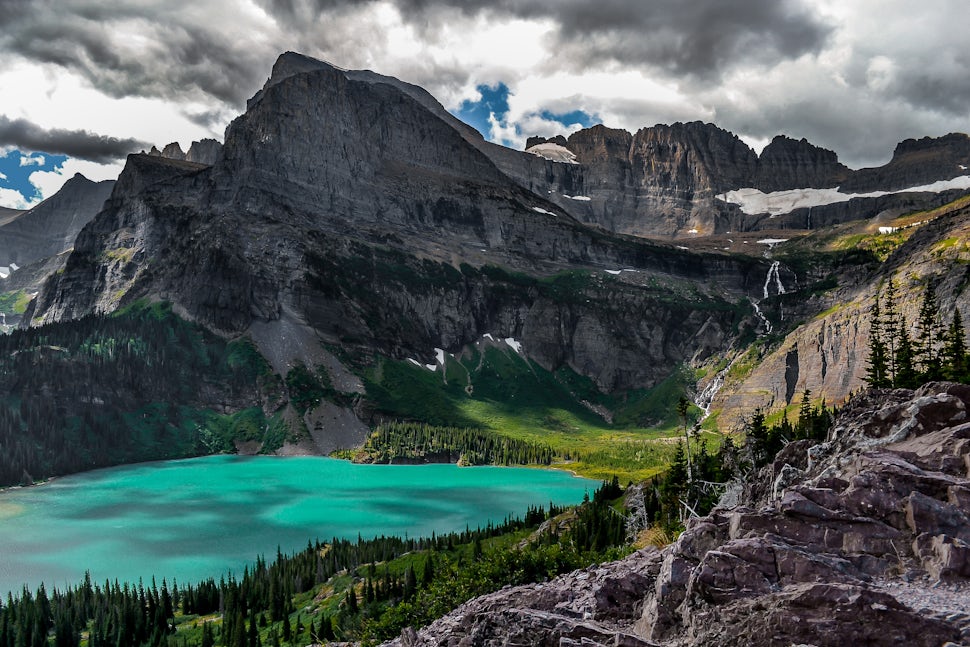Why Climate Change IS the National Park Service's Business
The NPS has been silenced on climate change - which threatens nearly every park the agency manages.

Among the flurry of executive orders, proclamations, and tweets coming out in the first days of the Trump administration was a gag order issued to the National Park Service limiting communication with the public via social media.
Climate change was on the list of blacklisted subjects.
The perspective of the Trump administration appears to be that the NPS has no connection to climate science or climate change, and so is overstepping its boundaries in communicating to the public about these topics. But this perspective couldn’t be further from the truth. Not only should the NPS be existentially concerned about climate change (it is, after all, a threat to humanity as we know it) - the NPS is at the front lines of climate change.
Take Glacier National Park - the poster child for climate change in the national parks. According to the US Geological Survey, the number of glaciers has shrunk from 150 when the park was established in 1910 to 25 by 2010. Ice models predict that the remaining glaciers - in the national park named “Glacier” - could disappear as early as 2030. For many of us, that’s within our lifetimes.

Which raises a prickly question: the mandate of the NPS is to preserve special places, and in this case one of the major criteria that makes Glacier National Park special is its glaciers. Once they disappear, will it remain a national park? What’s left to protect and preserve - a monument to places where glaciers could once be found? This alone should be reason enough for the NPS to have a stake in climate change.
The same reasoning applies to numerous other national parks. Sequoia, home to the giant sequoia trees, is anticipated to experience mass die-offs in the next 100 years due to diminishing snowpack, hotter and drier summers, and increasing wildfire frequency. Or Everglades, where saltwater intrusion resulting from sea level rise threatens the freshwater ecosystem. Virtually every park containing glaciers is under threat: Rainier, North Cascades, Rocky Mountain, Grand Teton, and nearly every park in Alaska - where 95% of glaciers are diminishing. And sea level rise is likely to inundate many coastal parks and displace coral reefs in Biscayne, Dry Tortugas, and Virgin Islands.

The pressure of climate change is already being felt by the NPS. Increasing wildfire frequency and intensity has stretched the agency’s resources and destroyed huge swaths of park land, most recently in Glacier, Yosemite, and Yellowstone. Loss of snowpack creates water scarcity for plant and animal populations, rendering the ecosystems that the NPS has been tasked with preserving more fragile. Changing weather patterns lead to increased flooding and landslides, damaging park infrastructure.
The NPS is not blind to the threat, either. The agency has taken a leading role in communicating the effects of climate change in the national parks. It has also been proactive in planning for these effects, releasing a handbook and organizing workshops to work through climate change scenarios.

The NPS is right to be concerned about climate change, despite how the Trump administration feels about climate science, and thankfully not everyone is taking the gag order lying down. In response to the order, Badlands National Park’s Twitter account began posting 140-character facts about climate change from the National Wildlife Federation before being taken suddenly offline. Just afterwards, an anonymous group of NPS employees established the @AltNatParkSer account, picking up where Badlands left off with climate facts and issuing a direct message that the people who work for the NPS will not quietly discard the agency’s leadership of climate education:
“Mr Trump, you may have taken us down officially. But with scientific evidence & the internet our message will get out.”
Crater Lake is fed almost entirely by melting winter snowpack, which is likely to decline under climate change.
We want to acknowledge and thank the past, present, and future generations of all Native Nations and Indigenous Peoples whose ancestral lands we travel, explore, and play on. Always practice Leave No Trace ethics on your adventures and follow local regulations. Please explore responsibly!
Do you love the outdoors?
Yep, us too. That's why we send you the best local adventures, stories, and expert advice, right to your inbox.








